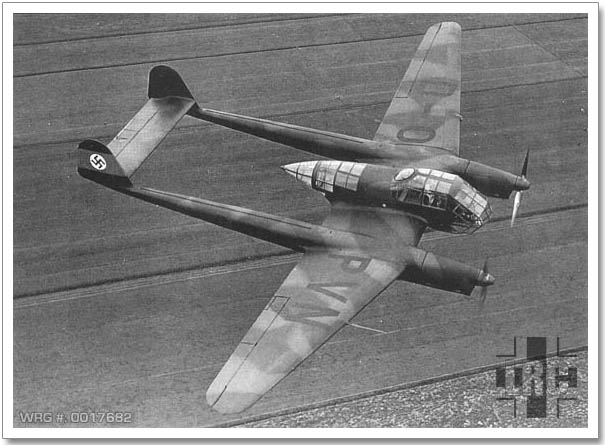LUFTWAFFE RESOURCE CENTER > RECONNAISSANCE > Fw 189 > PREVIOUS PAGE
FOCKE WULF Fw 189
Design & Development
In 1937, the German Ministry of Aviation issued a specification for a short-range, three-seat reconnaissance aircraft with a good all-round view to support the German army in the field, replacing the Henschel Hs 126, which had just entered service. A power of about 850-900 hp (630-670 kW) was specified. The specification was issued to Arado and Focke-Wulf. Arado's design, the Ar 198, which was initially the preferred option, was a relatively conventional single-engined high-wing monoplane with a glazed gondola under the fuselage. Focke-Wulf's chief designer Kurt Tank's design, the Focke-Wulf Fw 189 was a twin-boom design, powered by two Argus As 410 engines rather than the expected single engine and a central crew gondola designed with a heavily glazed and framed "stepless" cockpit forward section, which used no separate windscreen panels for the pilot (as with many German medium bombers), while Blohm & Voss proposed as a private venture something even more radical: chief design
er Dr. Richard Vogt's unique asymmetric BV 141. Orders were placed for three prototypes each of the Arado and Focke-Wulf designs in April 1937.

Fw 189 Prototype D-OPVN over Germany, 1939.
[Source: Unknown]
The Fw 189 was produced in large numbers, at the Focke-Wulf factory in Bremen, at the Bordeaux-Merignac aircraft factory (now the Dassault Mirage plant) in occupied France, then in the Aero Vodochody aircraft factory in Prague, occupied Czechoslovakia. Total production was 864 aircraft of all variants.
font>
Sources:
Wikipedia
LUFTWAFFE RESOURCE CENTER > RECONNAISSANCE > Fw 189 > PREVIOUS PAGE

